 Today has been a great day for County Kilkenny. Perhaps even the greatest day ever since the 17th century, when the town of Kilkenny was briefly - from 1642 to 1649 - the capital of Ireland. Nowadays Kilkenny is of less importance, except that it is the undisputed capital of Hurling, a position confirmed today with another spectacular win against Waterford, my home city and county. (If you live in Ireland, you know all this already, so feel free to skip this entry, which is really written for my many readers outside the Emerald Isle.)
Today has been a great day for County Kilkenny. Perhaps even the greatest day ever since the 17th century, when the town of Kilkenny was briefly - from 1642 to 1649 - the capital of Ireland. Nowadays Kilkenny is of less importance, except that it is the undisputed capital of Hurling, a position confirmed today with another spectacular win against Waterford, my home city and county. (If you live in Ireland, you know all this already, so feel free to skip this entry, which is really written for my many readers outside the Emerald Isle.)This afternoon at 3.30 p.m. the attention of most Irish people was centred on Croke Park in Dublin, the headquarters of the GAA (Gaelic Athletic Association), which controls Hurling, Camogie (which is Hurling played by women and girls) and Gaelic Football. At that time this year's final of the All-Ireland Senior Hurling Championship - commonly known here as the 'All Ireland Final' - began, attended by President Mary McAleese, Taoiseach Brian Cowen and many other dignitaries from politics, sports and all walks of life. For most Irish people the 'All-Ireland Final' is really the biggest event of the year, and it is broadcast live on both radio and television. (The match has often been compared with the 'Super Bowl' of American Football in the USA or the FA Cup Final in England, but it has a much higher importance in Irish minds and in the Irish culture than those major sporting events have in their countries.)
Even though this annual event always draws large crowds to Croke Park and creates for months huge interest all around the island, this year there was a lot more hype about this very Irish sports contest than in previous years.
The reason was that the two teams in the final were Kilkenny and Waterford. One really has to be Irish or live here for a very long time to understand what that means. So let me explain: It is not only that the two counties are neighbours here in the (usually sunny) South East of the Emerald Isle, they are - and always have been - also the most fierce rivals in sporting contests. Especially when it comes to Hurling, which is - like the whole GAA - a complete amateur sport, played usually on two levels: clubs and counties. The annual contest between the counties (which takes also place for Gaelic Football and Camogie) draws great attention and many Irish people are occupied with it in one way or another, although most of them only as supporters or fans.
 Waterford (the oldest city in Ireland) is more than twice as large than Kilkenny (which is only 48 km away, but in the province of Leinster, while Waterford belongs to Munster), but when it comes to Hurling, the County Kilkenny team (pictured above and nicknamed 'Cats' because of their striped jerseys in the county colours black & amber) are the giants and the Waterford team is rather mediocre.
Waterford (the oldest city in Ireland) is more than twice as large than Kilkenny (which is only 48 km away, but in the province of Leinster, while Waterford belongs to Munster), but when it comes to Hurling, the County Kilkenny team (pictured above and nicknamed 'Cats' because of their striped jerseys in the county colours black & amber) are the giants and the Waterford team is rather mediocre. The boys in white and blue (our county colours, pictured left) won the Munster championship three times, which has boosted their confidence and created much joy, support and civic pride among the local people.
The boys in white and blue (our county colours, pictured left) won the Munster championship three times, which has boosted their confidence and created much joy, support and civic pride among the local people.However, the All-Ireland title - and the coveted Liam McCarthy Cup that comes with it - seemed to be beyond the reach of our team, no matter how hard they tried and how much the people supported them enthusiastically.
Since the contest began in 1887, Waterford won the All-Ireland Senior Hurling Championship only twice, in 1948 (beating Dublin) and in 1959 (beating Kilkenny). They managed to reach the final in three more years, but lost: in 1938 (against Dublin), 1957 and 1963 (both against the arch rival Kilkenny).
Meanwhile Kilkenny went from success to success, becoming the strongest Hurling county in the whole of Ireland. (The three counties with the strongest Hurling tradition and the most wins of the 'All Ireland' are Kilkenny, Cork and Tipperary.) In the last decade alone Kilkenny won the title six times, and today's success is the second time they achieved a 'hat-trick', three wins in a row. (The first time they did it was almost a century ago, in 1911, 1912 and 1913.)
Despite Kilkenny being the clear favourites, almost the entire population of Waterford city and county (and many others in the 30 other Irish counties - except Kilkenny, of course) was hoping that this year the famous Liam McCarthy Cup would be won by Waterford. And after 45 years of waiting for another appearance in the final and 49 years after their last win the 'Blaas' (nickname of the team, derived from a popular bread role specific to Waterford) felt confident that they could do it.
For the past two weeks the city and county were in a state of tribalist ecstasy. In all the years I live here, I have never before seen so many flags in the county colurs (white & blue) displayed around the city. Many cars were flying the flag (and often two of them) as well. The atmosphere was electric, with high spirits shown openly. Complete strangers in the street would have a brief conversation about the matter, and people who know each other would speak about Hurling with more depth and enthusiasm. This was a rare experience in a region that is still under-developed, has the highest unemployment rate in Ireland and still no university...
The high spirit was carried on towards Dublin as well, and at Croke Park the presence of white & blue clearly outnumbered the showing of black & amber in the audience of the fully sold-out stadium. Even plenty of the neutrals (people from other counties) felt that, after such a long time of waiting, it was now "Waterford's turn" and wished us well, while many sports reporters and pundits also hoped for a Waterford win, as it would be good for the game as such and keep the competition more interesting.
But - unfortunately - all the enthusiasm and euphoria led to nothing but bitter disappointment. In the match this afternoon Waterford was not only beaten by Kilkenny again, the 'Blaas' were in fact hammered and outclassed by their opponents. The final score of 3-30 for the 'Cats' and only 1-13 for the 'Blaas' speaks for itself. (The first number stands for goals - worth 3 points - and the second for extra points scored. The total of points decides the winner. The same scoring system, which regularly confuses foreigners, is also applied to Camogie and Gaelic Football.)
Commentators and pundits on RTE Radio were audibly disappointed, and some said that they had "never before seen Waterford play so poorly". The disappointment for the thousands of fans who had traveled to Dublin for the match and all the supporters here at home was of course a lot worse. In fact, as I write this Waterford is in shock and a strange silence of sadness hangs over the city.
So what went wrong? Why did 'our boys' not perform as expected? Or was there perhaps simply too much hype and wishful thinking on the side of the Waterford people, not justified by the form and fitness of the team? Hard to say, and nobody really knows. As I am not a Hurling expert and in general not that keen on sports, I would not be qualified to analyse this. So I don't.
All I can report is that the mood in Waterford is terrible now, with the great hopes so many of the local people had invested in a team of 15 players crushed, and crushed in such a spectacular fashion. All who saw the match or listened to the broadcast will know that Kilkenny outplayed and outclassed Waterford right from the opening whistle, scoring massively. It appeared as if the Waterford team was almost stunned by the onslaught and had simply no answer, as they were so sure that it was their turn to win this time.
Well, life goes on and the world has not ended, even though it might seem so for hardcore GAA fans in Waterford. One should be realistic and fair to the team, which after all made it to an All-Ireland final. This in itself is a great achievement, and - as mentioned above - had not happened to Waterford for 45 years. They were beaten by the best, and that is no shame. So I hope that in days and weeks to come the usual begrudgers that always raise their ugly heads when things go wrong, will shut up and mind their own business.
In recent years the Waterford hurlers have improved their playing significantly. They won three Munster championships and several other titles. Last years they missed the All-Ireland final by a whisker, and this year they got there eventually. This should be reason for joy, and it hopefully will be. And, of course, there is always next year...
 But today is undoubtedly Kilkenny's day, and it is not more than fair and proper to congratulate the 'Cats' on their great win, while the whole of the Emerald Isle watches with joy and awe their captain James "Cha" Fitzpatrick (above) lifting the Liam McCarthy Cup, once again adorned with black and amber ribbons.
But today is undoubtedly Kilkenny's day, and it is not more than fair and proper to congratulate the 'Cats' on their great win, while the whole of the Emerald Isle watches with joy and awe their captain James "Cha" Fitzpatrick (above) lifting the Liam McCarthy Cup, once again adorned with black and amber ribbons.To make it a truly perfect day for Kilkenny, their minor team also won their All-Ireland final (played before the seniors' match), beating Galway 3-6 (15 points) to 0-13 (13 points). In a way the minor match was actually more exciting than the senior one, as Kilkenny had really to fight for their win. Having led by eight points (1-5 to 0-0) at half-time, Kilkenny saw Galway fighting back in the second half and scoring frequently, while Kilkenny almost dried up. Then a substitute (from the lovely little village of Mooncoin) came in, scored a goal and a point, and saved the day for his team. (The young man will be a local hero in Mooncoin for the rest of his life, I can assure you...)
This only underlines the strength of Hurling in County Kilkenny, which is also the home of the national club champions, Ballyhale (which is a tiny village). One of the GAA pundits on RTE said today that "there is nothing else there, so they play Hurling all the time". This might well be the case, but on its own it would not create the great successes. What comes with it is determination, hard work and - most of all - enormous discipline. And this is rather a rare commodity in modern Ireland, where the laissez fair attitude of 'anything goes' is prevalent.
As so often, it probably is a result of proper leadership. For the past ten years the Kilkenny team has the same manager, Brian Cody, who had a great career as a player himself before turning to management. Cody has a remarkable track record. Since 1999 he guided Kilkenny to six All Ireland titles, nine Leinster titles and four National Hurling League titles. The team's dominance of the Leinster Championship is unparalleled in the modern era, to the extent that under Cody Kilkenny have only lost one provincial game since 1999.
One of the key elements of his success is strict discipline. Brian Cody has the view that no player is bigger than the team. He consistently takes a "my way or the highway" approach when dealing with players and has been accused of having a "ruthless streak" in selecting players. This was evident in 2006, when he dropped his own son from the Kilkenny starting fifteen. However, his system works and has made the 'Cats' the most successful Hurling team in modern times.
Combine this with the fact that Cody is a Kilkenny man himself and has therefore strong local loyalties. Many sports teams nowadays change managers and trainers quite regularly, and often a manager who led one team to success is then hired by their opponents, in the hope that he will do the same for them. GAA sports are no exception to that, even though they are still played by amateurs. But the concept, as much as it might make sense in theory, rarely works in practice. (Waterford manager David Fitzgerald, appointed to his job only in June of this year, comes from Co. Clare, while his predecessor Justin McCarthy, who held the post for seven years, came from Co. Cork.)
Brian Cody is different. He is a Kilkenny man, first and foremost, who only ever played for one county and managed one county: Kilkenny. It is an example of Celtic tribalism at its best. This - in my humble opinion (not being a Hurling expert) - is the 'secret' of Kilkenny's great and lasting success. It might be good for Hurling and for Ireland if we had more people like Brian Cody.
As I write this, both teams are still in Dublin, one celebrating, the other licking their wounds. But tomorrow evening they will both return home to large civic ceremonial welcomes. Obviously the celebration will be larger and more joyful in Kilkenny, but Waterford will also give their team a good turnout for their homecoming. Such is local loyalty. The current Mayor of Waterford City, Jack Walsh (Labour Party) organised the ceremony long before the match was played. (By the way, the division between Waterford and Kilkenny can even go through families. As it happens, both teams will be welcomed home by a member of the same family, as the current Chairman of the Kilkenny County Council is a brother of the current Mayor of Waterford. They have not fallen out over Hurling and both also belong to the same political party.)
The importance of their participation in the All-Ireland final is so great that about 80% of all the companies on Waterford's industrial estate have given their workers Monday off in advance, and many local schools will be closed tomorrow as well. As I said above, one needs to be Irish, or live here for a long time, to understand all this. It might not be relevant to anyone outside this island, but I thought it would be interesting to give you a snapshot of an aspect of Irish life that few who don't live here will ever experience. It says so much about this nation, its culture and mentality.
The Emerald Islander


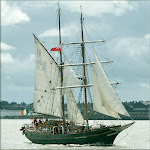

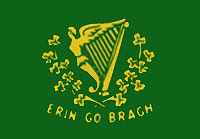





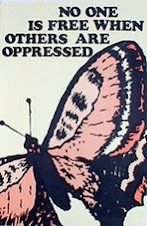






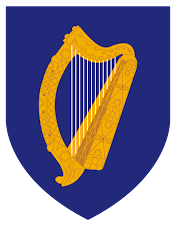






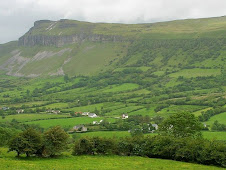
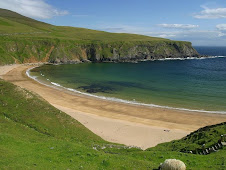













No comments:
Post a Comment